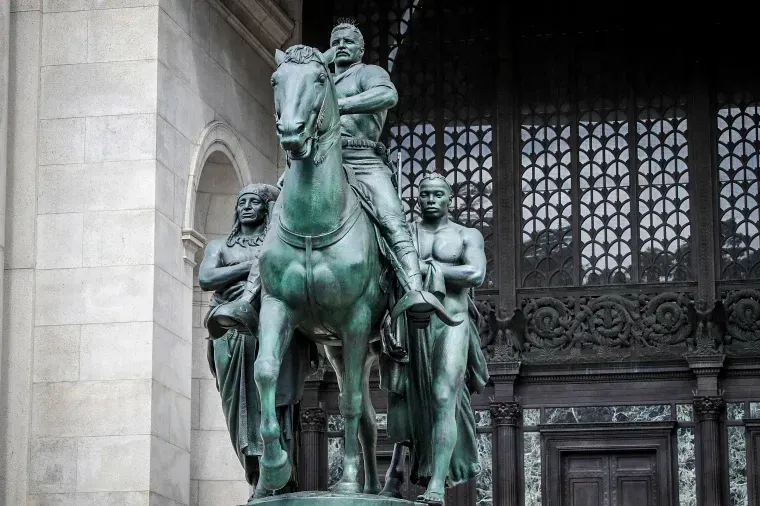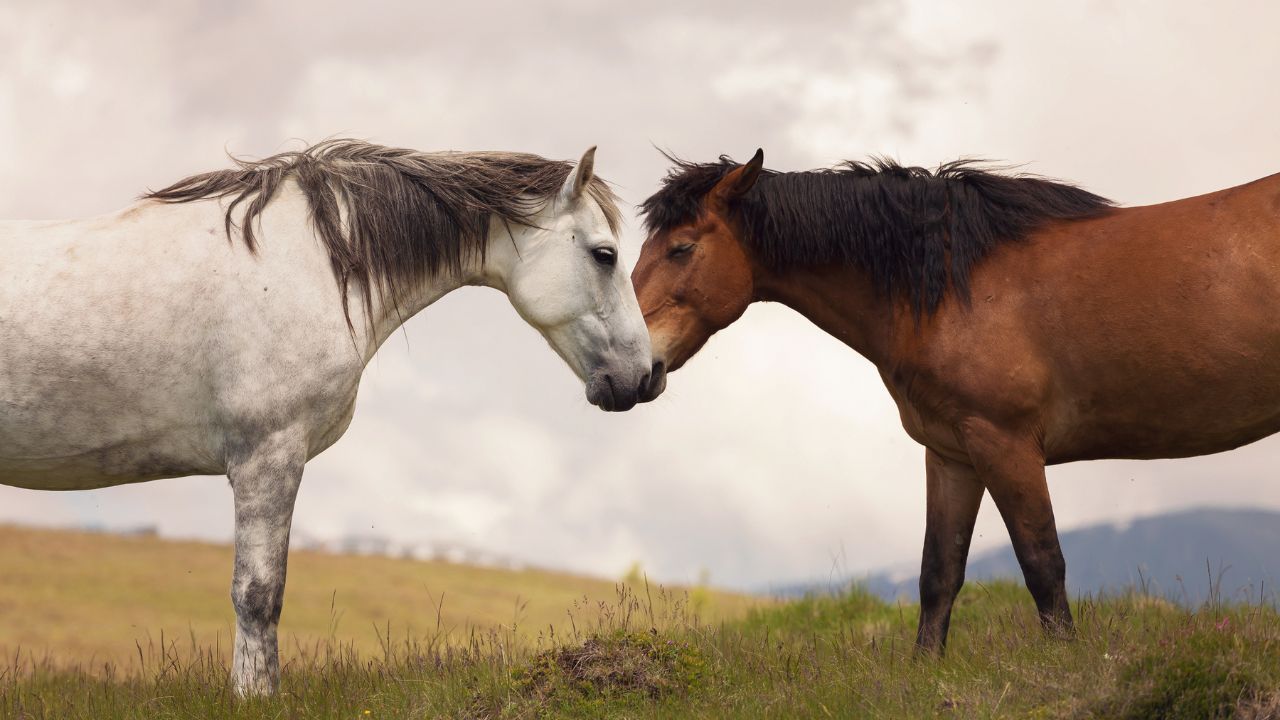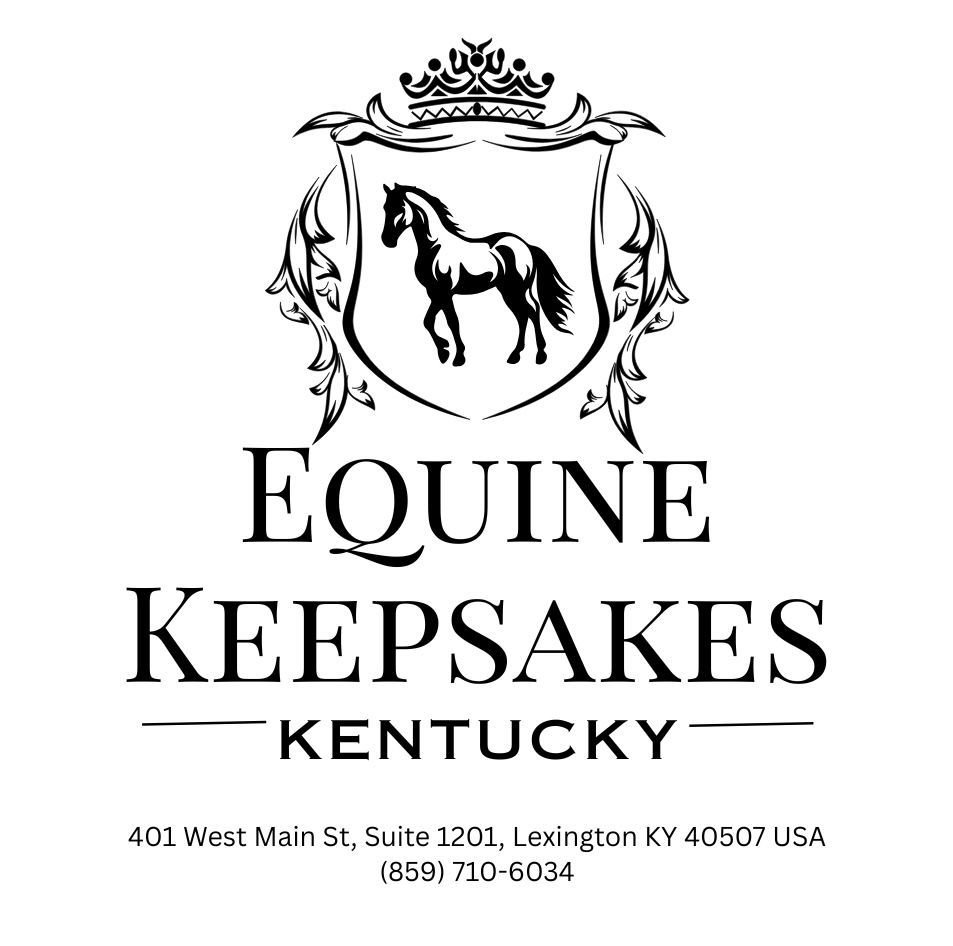8 Most Controversial and Misunderstood Equestrian Monuments in America: Exploring History, Heritage, and Heated Debates
Stella Rae, January, 2025
Across America's landscape, equestrian monuments stand as silent sentinels of history, each telling complex tales of triumph, controversy, and misunderstanding. These ten controversial equestrian statues challenge our perceptions of historical figures and events, sparking debates about representation, cultural values, and the evolving nature of public art.
From the streets of Richmond to the parks of Chicago, these bronze and stone horses carry riders whose legacies have become battlegrounds of interpretation. The monuments selected represent diverse periods of American history, ranging from the Revolutionary War through the Civil War and into the early 20th century.
These statues exist in cities with rich equestrian traditions, where horse culture continues to shape local identity and economy. Each location offers unique insights into how communities interact with their historical markers, and how changing perspectives influence our understanding of these enduring artistic works.

The controversial monument of an imposingTeddy Roosevelt flanked by a Native American man and an African man was removed in 2022 from it's resting place of 82 years outside of the American Museum of Natural History in New York City.
The Complexity of Historical Interpretation
Equestrian monuments reflect deep cultural values and shifting societal perspectives, while simultaneously serving as focal points for intense public debate about historical representation and artistic interpretation.
Historical Context and Controversy
Different generations interpret historical figures and events through distinct cultural lenses, leading to evolving views of equestrian monuments.
Public perception of these statues changes as new historical research emerges and social attitudes shift. The monuments that sparked minimal debate during their installation now generate significant discussion about representation and historical accuracy.
Many equestrian monuments were created during specific periods of American history, particularly the late 19th and early 20th centuries, when artistic choices often reflected the political climate of the time.
Equestrian Significance in Monuments
The horse's pose, size, and positioning in these monuments carry specific symbolic meanings. A rearing horse traditionally represents a leader who died in battle, while all four hooves on the ground indicate a peaceful death.
The sculptors' attention to equine anatomical detail varies significantly across different monuments. Some artists consulted veterinarians and horse trainers to ensure accuracy, while others prioritized symbolic representation over realism.
Military equestrian monuments typically feature specific horse breeds that were prevalent in their respective time periods. These choices help authenticate the historical narrative but can also perpetuate misconceptions about military horsemanship.
Robert E. Lee Monument, Richmond, Virginia
The Robert E. Lee Monument stood at 60 feet tall in Richmond's Monument Avenue Historic District from 1890 to 2021, marking the largest Confederate monument in the South. The bronze equestrian statue depicted Lee atop his horse Traveller in Confederate military attire.
Misinterpretations and Controversy
Many interpreted the monument as a symbol of Southern pride and military excellence, focusing on Lee's tactical prowess and his horse Traveller's legendary status in Civil War lore. This view ignored the statue's 1890 dedication purpose as a celebration of Confederate values and white supremacy.
The statue became a focal point for racial justice protests in 2020, with activists highlighting its role in perpetuating Lost Cause mythology. Richmond residents spray-painted the monument's base with civil rights messages and racial justice slogans.
The Virginia Supreme Court's 2021 decision to remove the statue recognized its contested meaning as both a work of art and a symbol of systemic racism.
Richmond's Equestrian Community Background
Richmond maintains a vibrant equestrian scene with over 20 riding facilities within 30 miles of the city center. The Deep Run Hunt Club, established in 1887, continues to host prestigious horse shows and events.
The city's temperate climate allows for year-round riding, with an average of 213 sunny days annually. Local tack shops and equine veterinary services support approximately 2,500 registered horses in the greater Richmond area.
Richmond hosts the Virginia Horse Festival each spring, drawing 15,000+ visitors and contributing $2.3 million to the local economy.
Stonewall Jackson Statue, Charleston, West Virginia
The bronze equestrian monument of Confederate General Thomas "Stonewall" Jackson stands on the grounds of the West Virginia State Capitol, erected in 1910 by sculptor Moses Ezekiel. The statue portrays Jackson astride his favorite horse, Little Sorrel, in a moment of calm leadership.
Debate and Historical Misunderstanding
Many West Virginians feel conflicted about the monument's placement in a state formed by seceding from Confederate Virginia. The statue commemorates a Confederate general in a Union-loyal state, creating a complex historical paradox.
Jackson's connection to the area stems from his birth in Clarksburg, making him one of the most famous historical figures from present-day West Virginia. Local historians emphasize his military genius and pre-war teaching career rather than his Confederate service.
The United Daughters of the Confederacy commissioned the statue during the Jim Crow era, a period when many Confederate monuments appeared across the country.
The Local Love for Horses
Charleston's equestrian community maintains strong ties to the region's horse heritage. The city hosts multiple riding clubs and yearly horse shows at the nearby Coonskin Park Equestrian Center.
The Capitol Complex grounds, where the statue stands, regularly welcome horse-drawn carriage tours, particularly during the spring tourism season. These tours often pause at the monument to discuss Little Sorrel's role in Jackson's military campaigns.
Local stables and riding schools frequently reference the statue's accurate depiction of 19th-century cavalry riding posture in their historical riding lessons.
James Longstreet Statue, Gettysburg, Pennsylvania
The equestrian statue of James Longstreet stands uniquely positioned at ground level on the Gettysburg battlefield, making it both distinctive and symbolically significant. The monument's placement and design reflect the complex legacy of a Confederate general who later supported Reconstruction.
The Controversy of Legacy
Longstreet faced intense criticism from former Confederate colleagues after the Civil War for his support of Republican Reconstruction policies and African American voting rights. The monument wasn't erected until 1998, over a century after other Confederate memorials appeared on the battlefield.
His tactical disagreements with General Robert E. Lee at Gettysburg, particularly regarding Pickett's Charge, led to decades of blame for the Confederate defeat. Southern historians and veterans groups actively worked to diminish his military achievements.
Equestrian Traditions in Gettysburg
The Longstreet monument breaks from traditional equestrian statue conventions by placing horse and rider directly on the ground rather than on an elevated pedestal. This design choice makes the monument more approachable and reflects Longstreet's post-war journey toward reconciliation.
Gettysburg's equestrian community maintains strong connections to the battlefield's horse heritage through trail rides, historic reenactments, and guided tours. Local stables offer battlefield tours on horseback, allowing visitors to experience the terrain as Civil War cavalry did.
The region's moderate climate supports year-round equestrian activities, with several riding academies and boarding facilities serving both residents and tourists.
Ulysses S. Grant Memorial, Washington D.C.
The Ulysses S. Grant Memorial stands as America's largest equestrian monument, positioned prominently at the east front of the U.S. Capitol Building. The 252-ton bronze masterpiece, completed in 1922, showcases Grant atop his favorite war horse Cincinnati.
Political Controversies and Misconceptions
Many critics initially opposed the memorial's construction, claiming Grant's military leadership style was too aggressive and costly in terms of casualties. This perspective overlooked his strategic brilliance in cavalry deployment and innovative mounted warfare tactics.
The statue faced criticism for its depiction of Grant sitting calmly while chaos erupts around him. This artistic choice actually represents Grant's famous composure under fire, a trait that helped win crucial battles at Vicksburg and Petersburg.
Some questioned the memorial's scale and $250,000 cost in 1922. The investment preserved a crucial piece of American military and equestrian heritage.
Capital of Equestrian Statues
Washington D.C. hosts 40 major equestrian statues, with the Grant Memorial serving as the crown jewel. The city's equestrian culture thrives through the Rock Creek Park Horse Center and numerous riding trails.
The National Capital Region benefits from three major horse racing tracks within driving distance. Local stables offer year-round riding lessons despite the area's varied climate.
The region's median income of $91,000 supports a robust equestrian community, with multiple tack shops and breeding facilities serving both recreational riders and competitive athletes.
General William Tecumseh Sherman Monument, New York
The gilded bronze equestrian monument at Grand Army Plaza stands as one of America's most intricate Civil War memorials. The statue's creation sparked intense debate during its design phase and continues to generate discussion about its historical significance.
Public Perception and Historical Complexities
The selection of the monument's artist in 1896 ignited controversy when sculptor Carl Rohl-Smith died during the design phase, creating uncertainty about the project's completion.
New Yorkers embraced Sherman's memorial partly due to his residence in the city and his direct personality, which matched local sensibilities.
The monument's gilded surface and prominent location near Central Park reflect Sherman's significant military achievements, while simultaneously raising questions about the commemoration of Civil War figures.
New York's Equestrian Scene
Manhattan's equestrian community centers around Central Park's bridle paths and the historic Claremont Riding Academy building, creating a fitting backdrop for Sherman's mounted statue.
The city maintains several riding facilities despite its urban density, with notable stables in the Upper West Side and private clubs offering year-round equestrian activities.
Local equestrians often gather near the monument during events, connecting the city's contemporary horse culture with its military heritage through the statue's prominent placement at Fifth Avenue and 59th Street.
Statue of Andrew Jackson, New Orleans, Louisiana
The Battle of New Orleans memorial statue in Jackson Square depicts Andrew Jackson astride his horse, raising his hat in a military salute. Created by Clark Mills in 1856, this bronze equestrian monument stands as one of the most recognized landmarks in the French Quarter.
Disputed Heroism and Colonial Legacy
The statue ignited controversy due to Jackson's complex legacy regarding Native American removal policies and his ownership of enslaved people. While celebrated for defending New Orleans in 1815, many critics argue the monument glosses over his role in the Trail of Tears.
The horse's rearing stance falsely suggests Jackson charged into battle, when historical records show he actually commanded from behind defensive lines. Military historians note this artistic choice perpetuates misconceptions about his direct combat involvement.
Local activists have protested the statue's prominent placement, citing Jackson's support for expanding slavery into western territories. These demonstrations intensified during the 2020 racial justice movements.
Equestrian Life in New Orleans
New Orleans maintains a vibrant equestrian culture centered around the historic French Quarter carriage tours. The city hosts over 50 licensed carriage operators who provide daily tours around Jackson Square.
The local Fair Grounds Race Course, established in 1872, holds significant thoroughbred racing events throughout its November to March season. This track contributes approximately $125 million annually to the local economy.
Several riding academies operate in the greater New Orleans area, with notable facilities in nearby St. Tammany Parish. These stables offer year-round lessons despite the subtropical climate's high humidity and frequent rainfall.
The New Orleans Equestrian Society preserves historical riding traditions through educational programs and seasonal competitions at their Metairie facility.
Theodore Roosevelt Equestrian Statue, New York
The Theodore Roosevelt Equestrian Statue, (pictured above) which stood at the American Museum of Natural History from 1940 to 2022, sparked intense debate over its hierarchical composition and racial implications.
Challenging the Hero Narrative
The statue depicted Roosevelt on horseback, flanked by two walking figures - a Native American and an African man. Critics pointed out the problematic power dynamic of the composition, with Roosevelt elevated above the two men.
The horse itself, a powerful Arabian stallion, was meant to symbolize Roosevelt's strength as a leader and outdoorsman. Yet this symbolism became part of the controversy, as the elevated equestrian position historically represented dominance and conquest.
The removal decision in 2022 came after years of protests and public discourse about how historical figures should be memorialized in public spaces.
Horse Culture in The Big Apple
New York City maintains a vibrant equestrian community despite its urban landscape. Central Park's bridle paths see regular use by the city's riding enthusiasts, while several stables operate in Manhattan.
The New York Horse and Carriage Association provides tourist rides through Central Park, employing over 150 drivers and maintaining approximately 200 horses.
Local riding academies like Riverdale Stables in the Bronx and Jamaica Bay Riding Academy in Brooklyn serve thousands of students annually, offering lessons and boarding facilities.
The NYPD Mounted Unit, established in 1858, continues to patrol the city streets with 50 active horses, representing one of the largest mounted police units in the United States.
General John Logan Monument, Chicago, Illinois
The bronze equestrian statue of General John A. Logan stands proudly in Grant Park, Chicago, drawing both admiration and criticism for its depiction of the Union general and political figure. The monument's 1897 dedication marked a significant moment in Chicago's artistic and cultural development.
Civil War Memory and Its Discontents
The statue, created by sculptor Augustus Saint-Gaudens, portrays Logan atop his horse in full military regalia, sword raised high. Some historians question the romanticized portrayal, noting Logan's complex political evolution from Southern sympathizer to Union champion.
Critics point to Logan's early pro-slavery stance and his initial opposition to Lincoln's policies. The monument's placement in Grant Park sparked debates about whose history deserves commemoration in public spaces.
Recent scholarship has highlighted Logan's transformation into a staunch advocate for African American civil rights after the war, adding nuance to the ongoing discussions about the memorial's significance.
Chicago Equestrian Heritage
Grant Park's equestrian community regularly incorporates the Logan Monument into their cultural activities and riding tours. The park hosts numerous horse-related events throughout Chicago's mild summer months.
The monument sits near several prominent riding schools and equestrian facilities that serve Chicago's diverse population of horse enthusiasts. Local riding clubs often gather at the site during their annual Memorial Day commemorations.
The Chicago Park District maintains dedicated bridle paths connecting the monument to other historical sites, though winter conditions from December through March typically limit equestrian activities.
The area's equestrian businesses generate significant tourism revenue, with riding tours and horse-drawn carriage services operating year-round from nearby Michigan Avenue.
Conclusion
These ten equestrian monuments represent crucial chapters in American history, sparking important discussions about representation, historical accuracy, and cultural values in public art.
Reflecting on Equestrian Monuments
Equestrian monuments serve as powerful symbols that connect communities to their past while prompting meaningful dialogue about how we commemorate historical figures.
Each statue's placement, design, and subject matter reflects the specific time period and local values when it was erected. The controversies surrounding these monuments have led many cities to reevaluate their public art collections.
The equestrian elements of these memorials highlight America's deep connection to horses, from military campaigns to cultural traditions. Local horse communities often play key roles in preserving and interpreting these monuments.
Modern perspectives have brought new understanding to these historical works, encouraging more inclusive and nuanced interpretations of their subjects. Cities continue to find creative solutions for contextualizing these monuments while respecting multiple viewpoints.
The ongoing discussions about these ten monuments demonstrate how public art remains a vital part of America's evolving cultural landscape.
Frequently Asked Questions
The historical and cultural significance of equestrian monuments in America extends beyond their artistic value, encompassing complex social dynamics, local community engagement, and economic impacts on their host cities.
What are the reasons behind the controversy of major equestrian monuments in America?
Many equestrian monuments face scrutiny due to their connections to the Confederacy and colonial-era conflicts with Native Americans.
The debate often centers on whether these statues preserve history or perpetuate harmful ideologies.
Some monuments have drawn criticism for inaccurate portrayals of historical events or misrepresenting the roles of the individuals depicted.
Which equestrian statues in the U.S. have been widely misunderstood and why?
The Theodore Roosevelt statue in New York City sparked debate due to its hierarchical composition rather than Roosevelt's equestrian legacy.
The Pike Monument in Little Rock faced reinterpretation after historians uncovered new documents about Pike's military campaigns.
The Nathan Bedford Forrest statue in Tennessee generated confusion about its artistic intent versus historical accuracy.
What historical events are associated with America's most debated equestrian monuments?
The Civil War serves as the primary historical context for numerous controversial equestrian monuments.
The Western expansion and Indian Wars form the backdrop for several contested frontier-themed equestrian statues.
The Revolutionary War monuments have faced modern scrutiny regarding their portrayal of colonial-indigenous relations.
How does the local equestrian community in the cities with these monuments engage with them?
Local riding clubs often organize educational programs about the horsemanship depicted in these monuments.
Many equestrian communities advocate for preserving the artistic and technical aspects of these statues while acknowledging their complex histories.
Horse enthusiasts frequently contribute to discussions about anatomical accuracy in these monuments.
What impact do demographics and weather have on the cities with controversial equestrian statues?
Cities with diverse populations tend to engage in more active dialogue about their equestrian monuments' cultural implications.
Weather conditions affect maintenance costs and preservation efforts for outdoor bronze and stone equestrian sculptures.
Urban growth patterns influence accessibility and visibility of these monuments to different community groups.
How have tourism and local equestrian businesses been affected by these monumental controversies?
Some riding tours and historical walking routes have adapted their narratives to address the complexities surrounding these monuments.
Local tack shops and equestrian supply stores report varying impacts based on their proximity to controversial monuments.
Tourism agencies have developed new strategies to present these monuments within their complete historical context.



